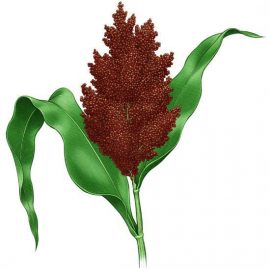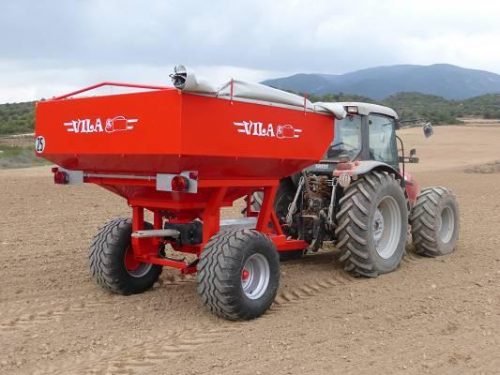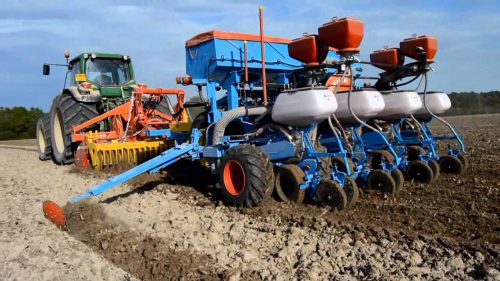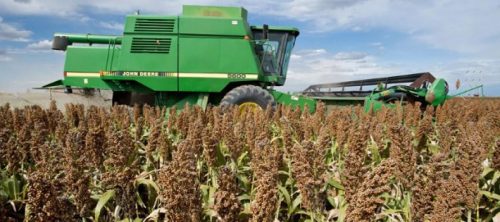Sorghum, cultivation and harvesting technology
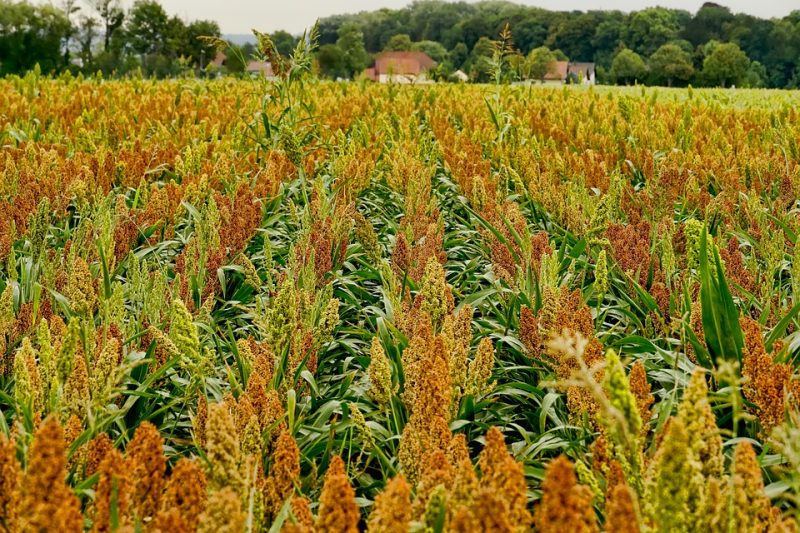
Sorghum (Sorghum bicolor) is a plant that belongs to the Poaceae family, being one of the most cultivated species in the world. This plant is drought-resistant, and numerous recent studies have shown that it can be a substitute for corn in animal feed recipes. Positive results have been obtained in feeding birds, dairy cattle, and bulls. Cultivation of this species is justifiable due to its drought resistance. For this reason, sorghum ensures satisfactory production even in harsh conditions. In addition to sorghum that is grown for grain, in the culture we can find technical sorghum, sweet sorghum, and fodder sorghum. Technical sorghum is used to make brooms. Sweet sorghum contains in its stem quantities of sugars of about 20%, and after the extraction process, a syrup is obtained used in the food industry. In addition to these species, there are several varieties and hybrids that are grown for silos.
Environmental and soil requirements
Being very similar to corn, this species is a great lover of heat. The minimum germination temperature is 10-12 °C and requires during the vegetative growth period temperatures between 25 and 35 °C. Among the plants grown in our country, sorghum is the most resistant to drought. Sorghum has a very well-developed root system, but in case of prolonged drought, it reduces in size. Also, the evapotranspiration coefficient is low. This species is not pretentious in terms of soil and can be planted in poorly fertile, sandy, or eroded land. It can tolerate a soil pH between 4.5 and 8.5. It is a light-loving plant, and in shaded areas, the plant’s resistance to drought, disease, and pests decreases.
Sorghum crop technology
Crop rotation
Sorghum is not pretentious, withstanding monoculture for 3-5 years. It is very sensitive to weeds due to the slow development rate in the early stages of the vegetative growth period. Thus, soils infested with perennial monocotyledons, with plant residues that are not incorporated in the soil or rocky ones should be avoided. Good precursor plants are sunflower, corn, straw, flax, rice, or millet. Sorghum is a good precursor plant for peas, corn, sunflower, and grain legumes.
Fertilization
This species responds very well to fertilization with mineral fertilizers. It uses 70% of the nitrogen dose, 60% of the phosphorus dose, and 80% of the potassium dose. Nitrogen fertilization should be done differentially according to soil pH. Sorghum reacts well to the application of foliar fertilizers.
Field works
They consist of stubble plowing, followed by tillage. The plowing depth is between 20 and 30 cm, being influenced by the soil texture. A passage with the disc harrow has to follow, and in spring, the preparation of the seedbed is next.
Seeds and sowing
Sowing has to be done in spring, when in the soil, at the depth of sowing, temperatures of 10-12 °C are achieved. The distance between rows is between 50 and 70 cm, and the distance between plants per row is between 3 and 16 cm. Sorghum seeds must come from a safe, certified source and be free of diseases and pests. The average amount of seeds needed per hectare is about 8 kg.
Weed control
It can be achieved through mechanical or manual hoeing, but the most effective method of control is through chemical treatments.
Recommended products
-
You can find products on a different store
Change Store -
You can find products on a different store
Change Store -
You can find products on a different store
Change Store -
You can find products on a different store
Change Store -
You can find products on a different store
Change Store -
You can find products on a different store
Change Store -
You can find products on a different store
Change Store -
You can find products on a different store
Change Store -
You can find products on a different store
Change Store -
You can find products on a different store
Change Store -
You can find products on a different store
Change Store -
You can find products on a different store
Change Store -
You can find products on a different store
Change Store -
You can find products on a different store
Change Store -
You can find products on a different store
Change Store -
You can find products on a different store
Change Store -
You can find products on a different store
Change Store -
You can find products on a different store
Change Store -
You can find products on a different store
Change Store -
You can find products on a different store
Change Store -
You can find products on a different store
Change Store -
You can find products on a different store
Change Store -
You can find products on a different store
Change Store -
You can find products on a different store
Change Store
Diseases and pests
The most important diseases that can occur in sorghum culture are mosaic virus, bacterial canker, covered smut, target spot. Among the pests, the most common are Western corn rootworm, scarabaeus monodon, grey corn weevil, wireworms, European corn borer.
Harvesting
It is done with the help of straw combines. The operation begins when the humidity of the sorghum grains has dropped below 14%. This way the grains do not shake or break. Harvesting is done differentially. When the combine passes for the first time, the inflorescences are harvested (they contain grains), and when the combine passes the second time, the stems. are harvested.














































































































































































































































































































































































































































